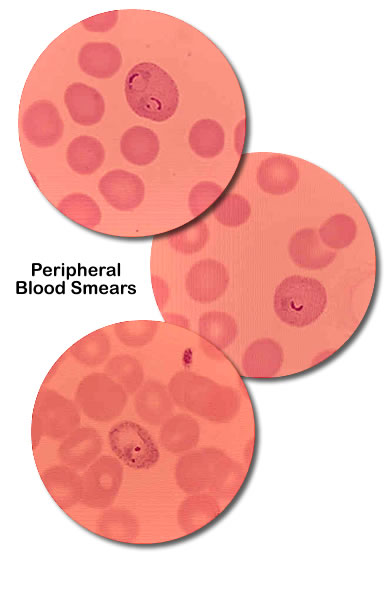 |
A 31 y.o. white male was admitted to the hospital on Christmas Day, 2001 for nausea, vomiting, fever, arthralgias, and severe headache.
Normally in good health he had returned from a two week honeymoon trip to the Cook Islands (Rarotonga and Aitutaki) three weeks previously. He had first become ill seven to ten days after his return similarly with shaking chills, nausea, vomiting, arthralgias, and headache. After abating similar symptoms recurred one other time prior to his eventual emergency room presentation. Labs obtained at an outpatient visit a week before admission included WBC 3.9(L), Hbg 15.6, and Plts 45(L).
Two years previously the patient had spent a month in Malawi, East Africa visiting his future wife who at that time was a Peace Corps volunteer. He recalled having unpleasant side effects from taking prophylactic anti-malarial medications at the time. It was partly for that reason that he and his fiance chose to honeymoon in the Cook Islands, said to be malaria free by the CDC and WHO. The patient and his new wife stayed at "four star" accommodations and took no particular precautions in regard their food, beverage, or activities. Their visit to the islands was made even more notable by the occurrence of Tropical Cyclone "Trina" which struck the islands during their visit. The patient recalled several mosquito bites. Prior to his travel he had often enjoyed hiking in the Cascade Mountains of western Washington. He was unaware of any recent tick bites.
On examination in the emergency room he appeared uncomfortable and complained particularly of headache. Vital signs included temp 102.7, pulse 120, BP 108/38. Laboratory evaluation included: WBC 7.6, Hgb 13(L), Plts 83(L). A lumbar puncture was performed with results including WBC 16 (80% mononuclear cells), glucose 66, protein 50.
The patient exhibited borderline hypotension and was admitted to the hospital for rehydration, anti-emetic therapy, and observation. Additional laboratory studies were obtained including the blood smears shown at left.
|